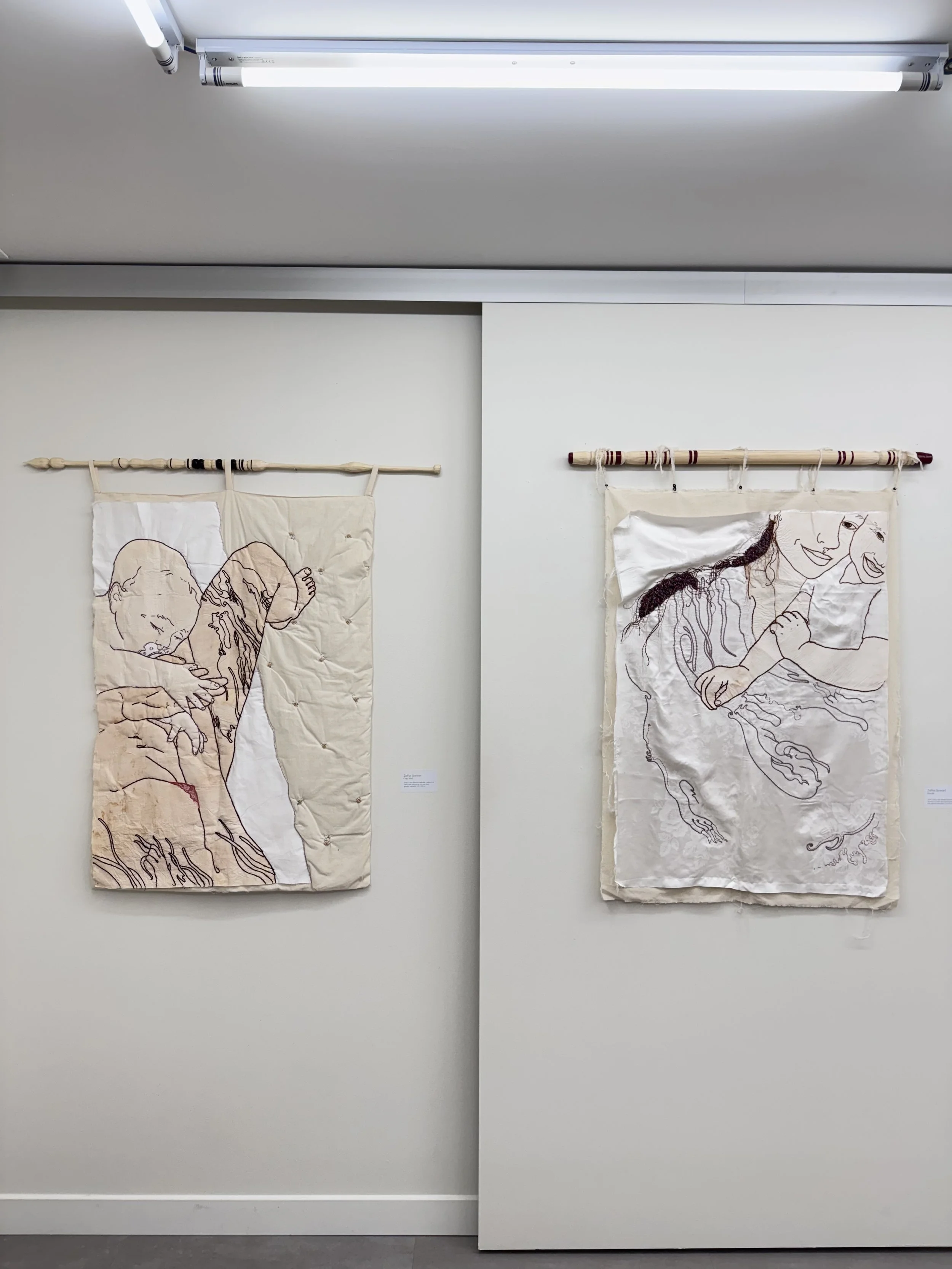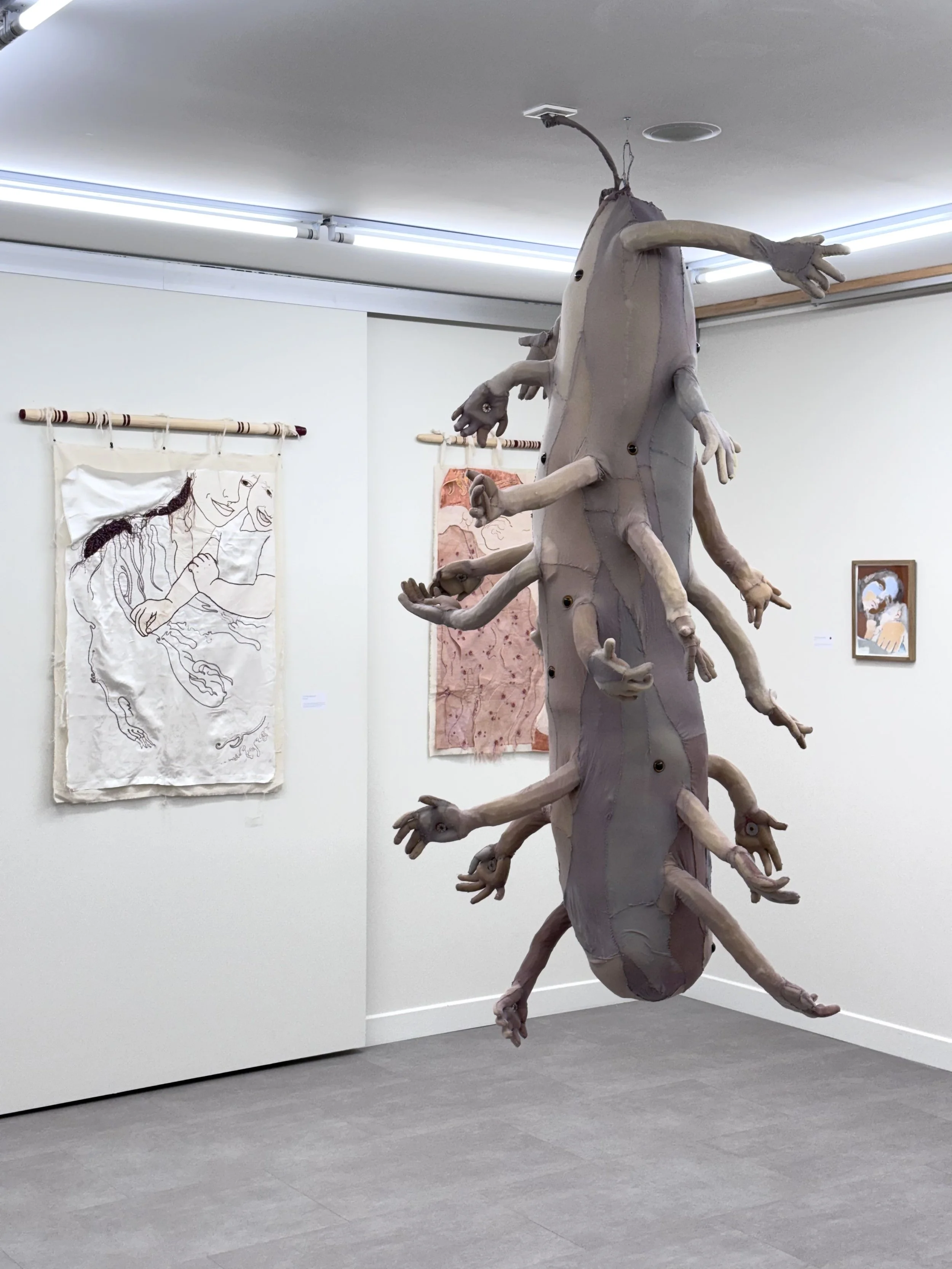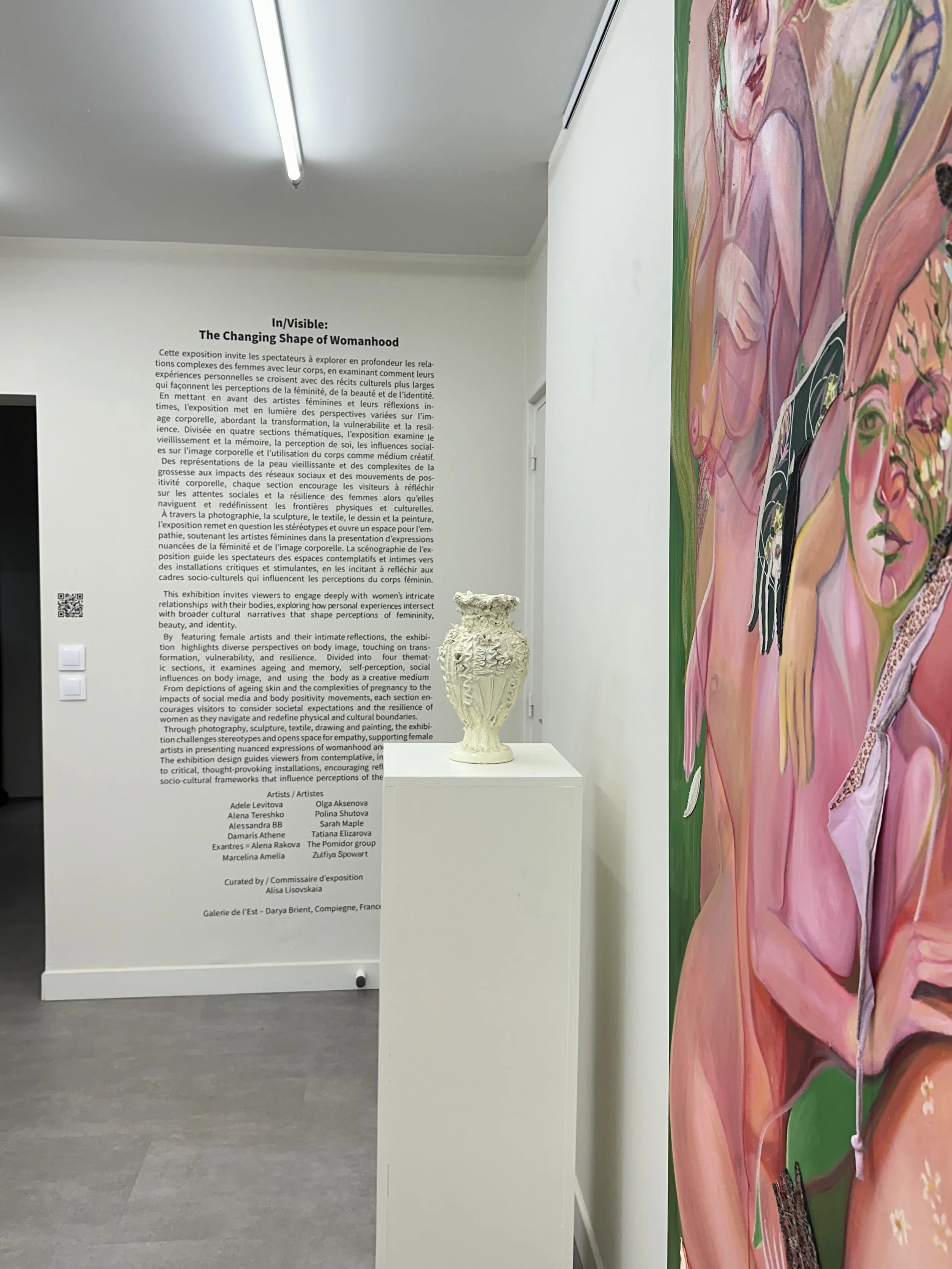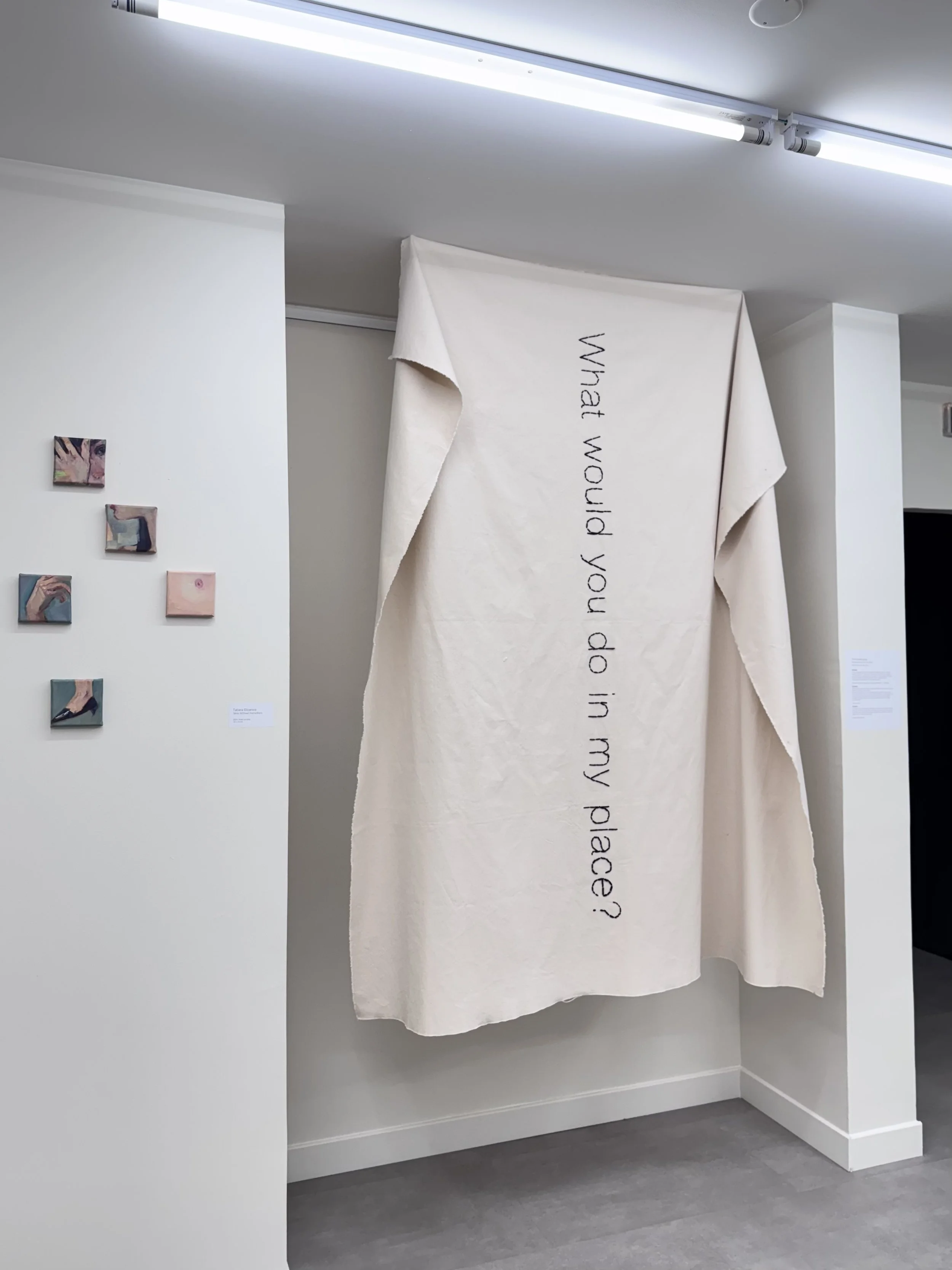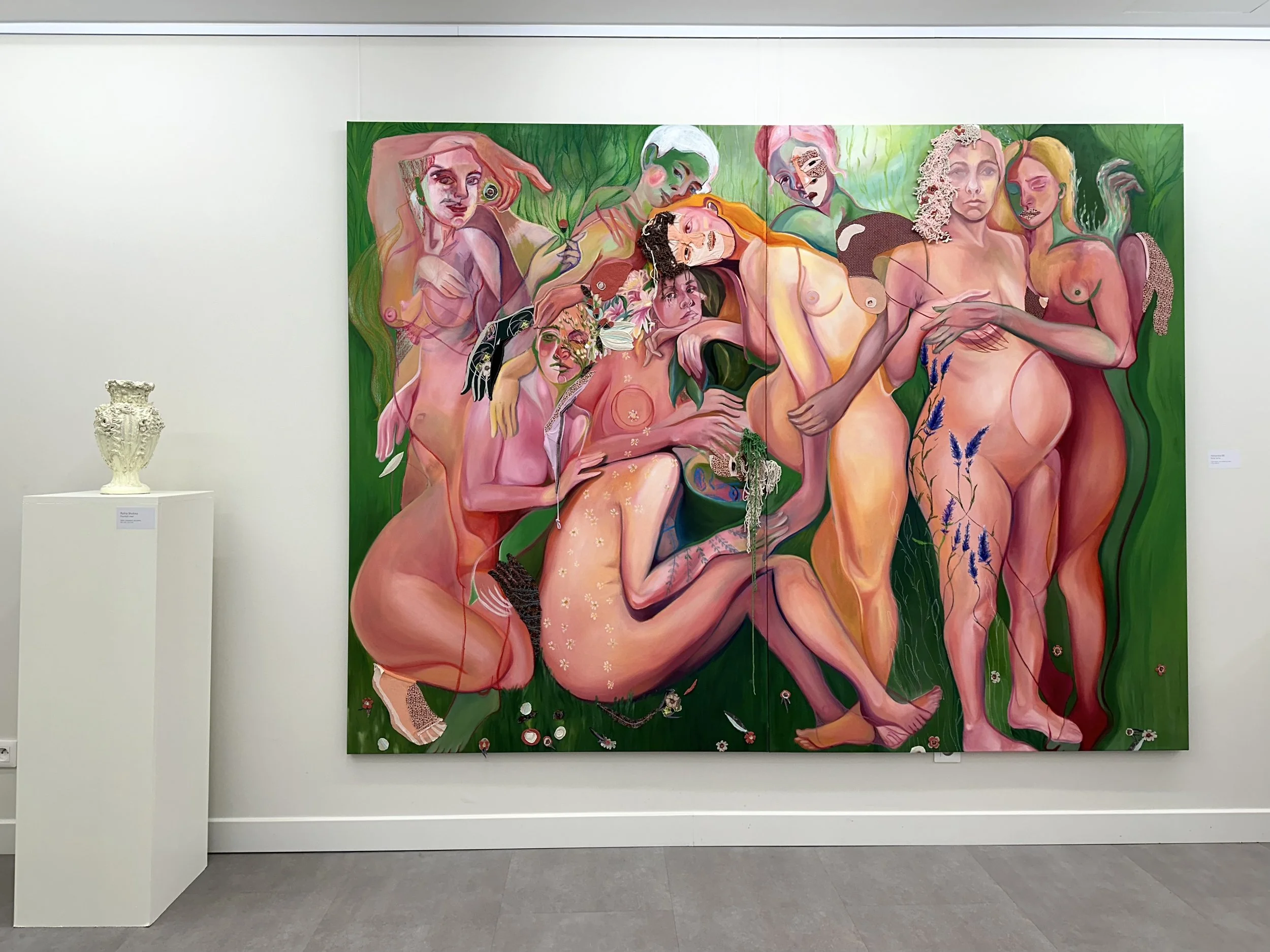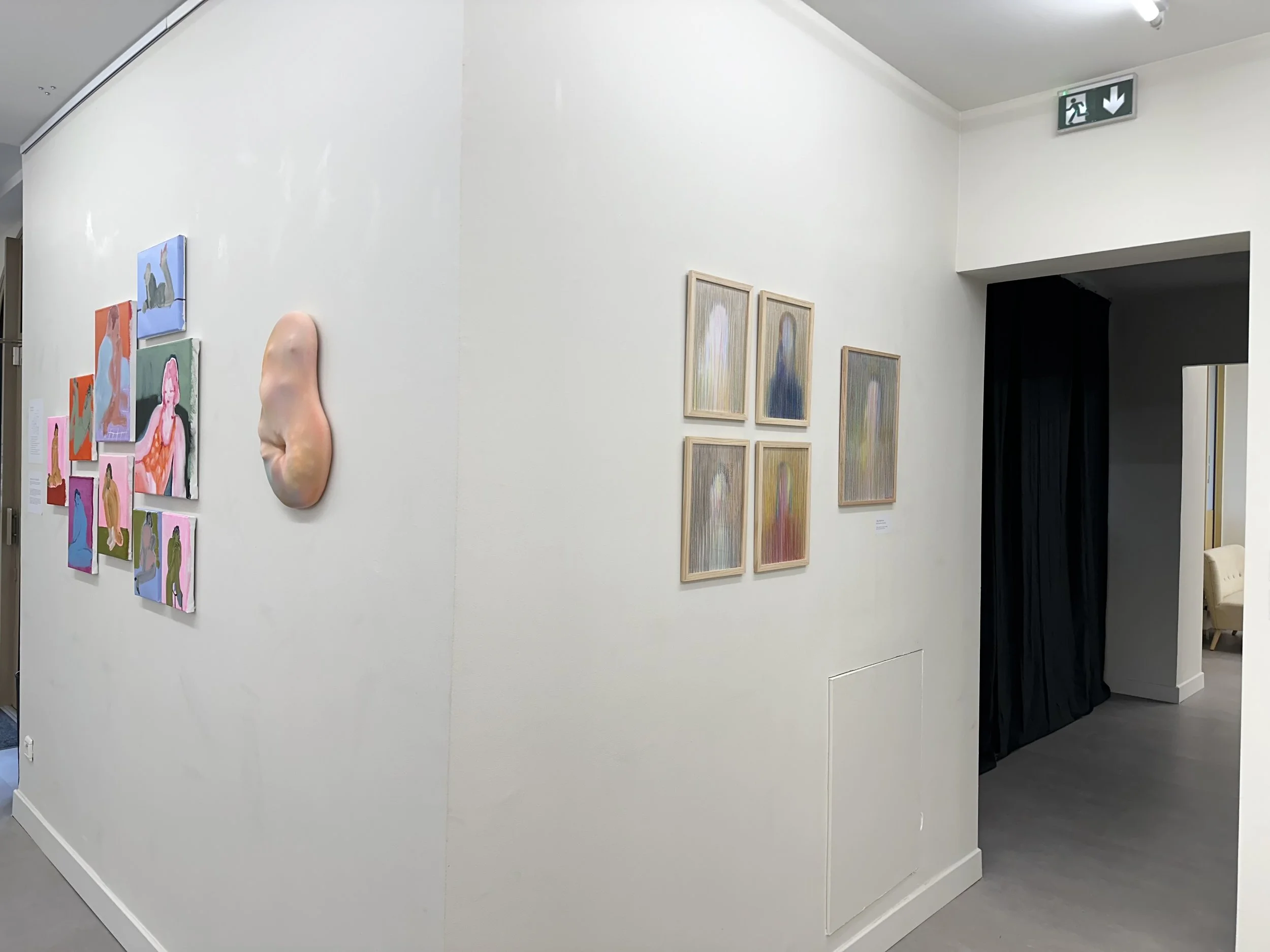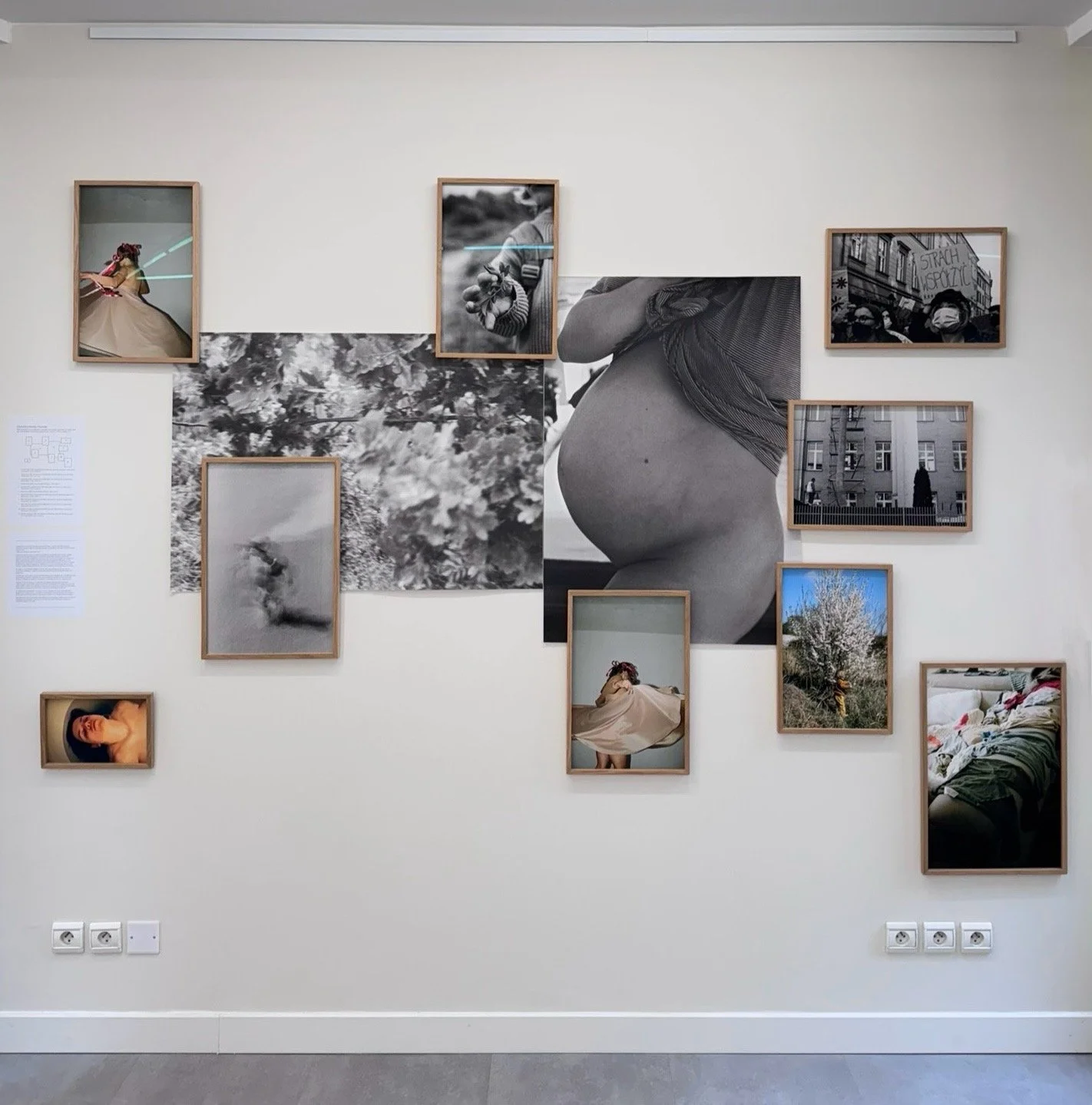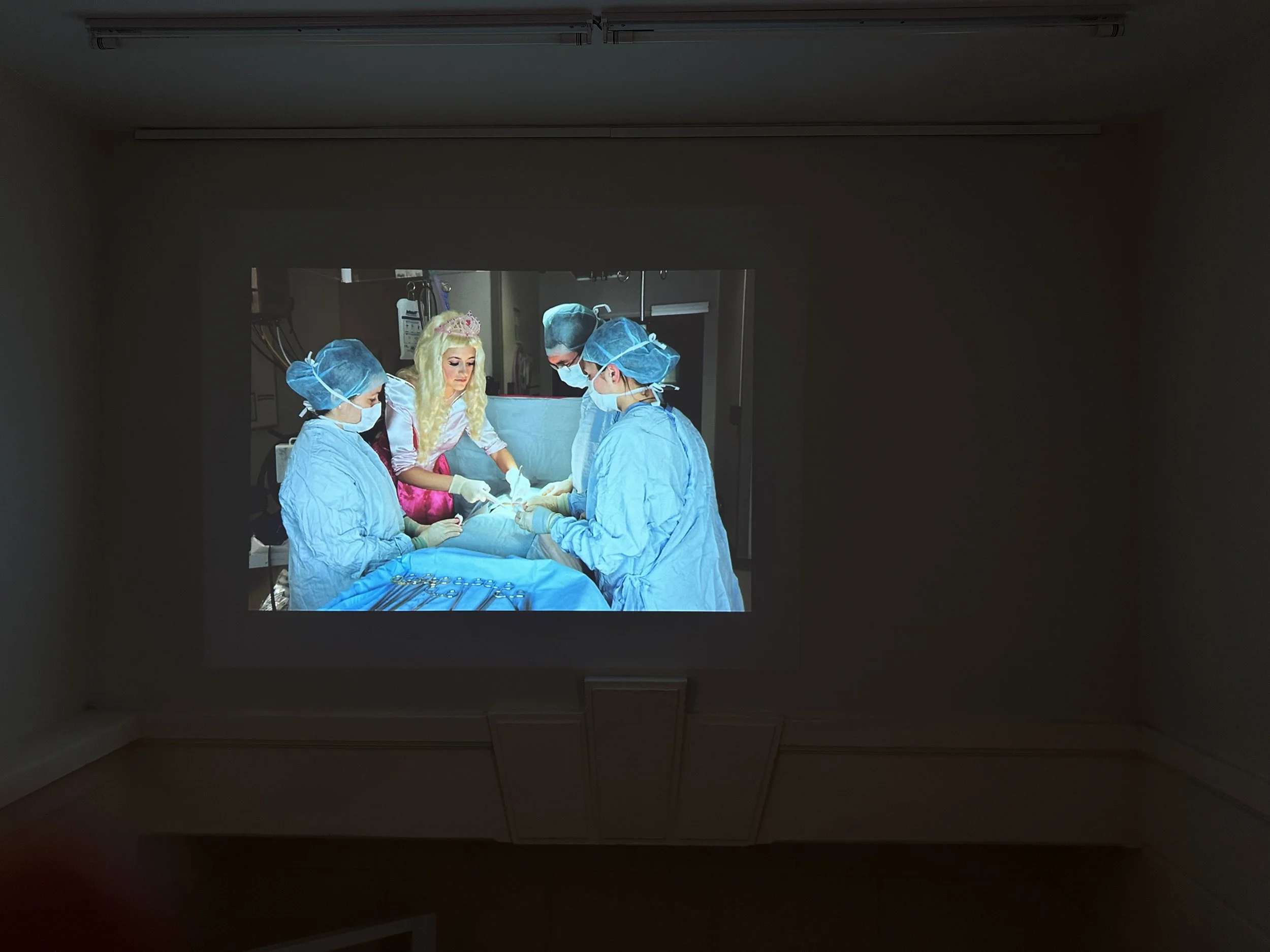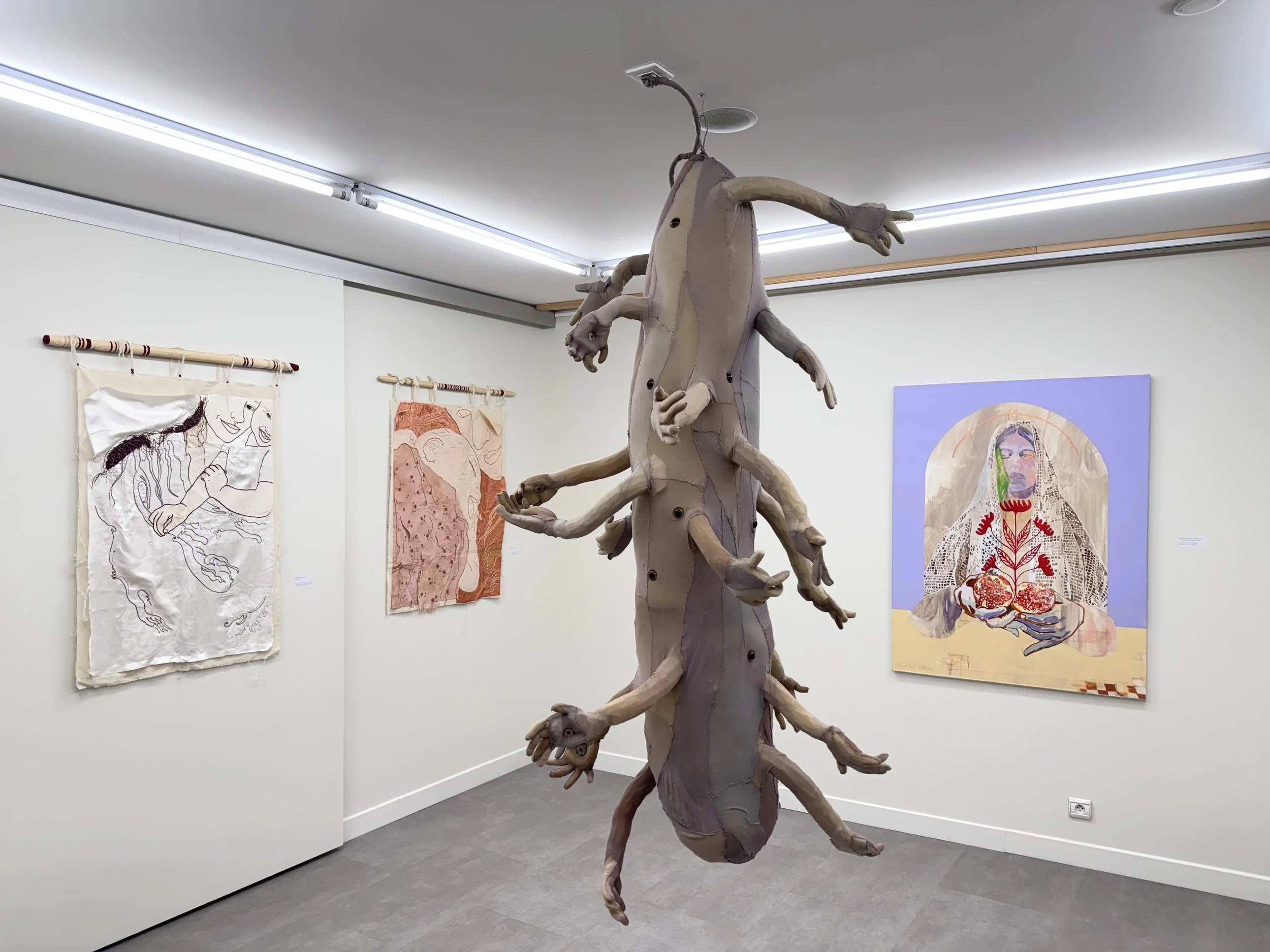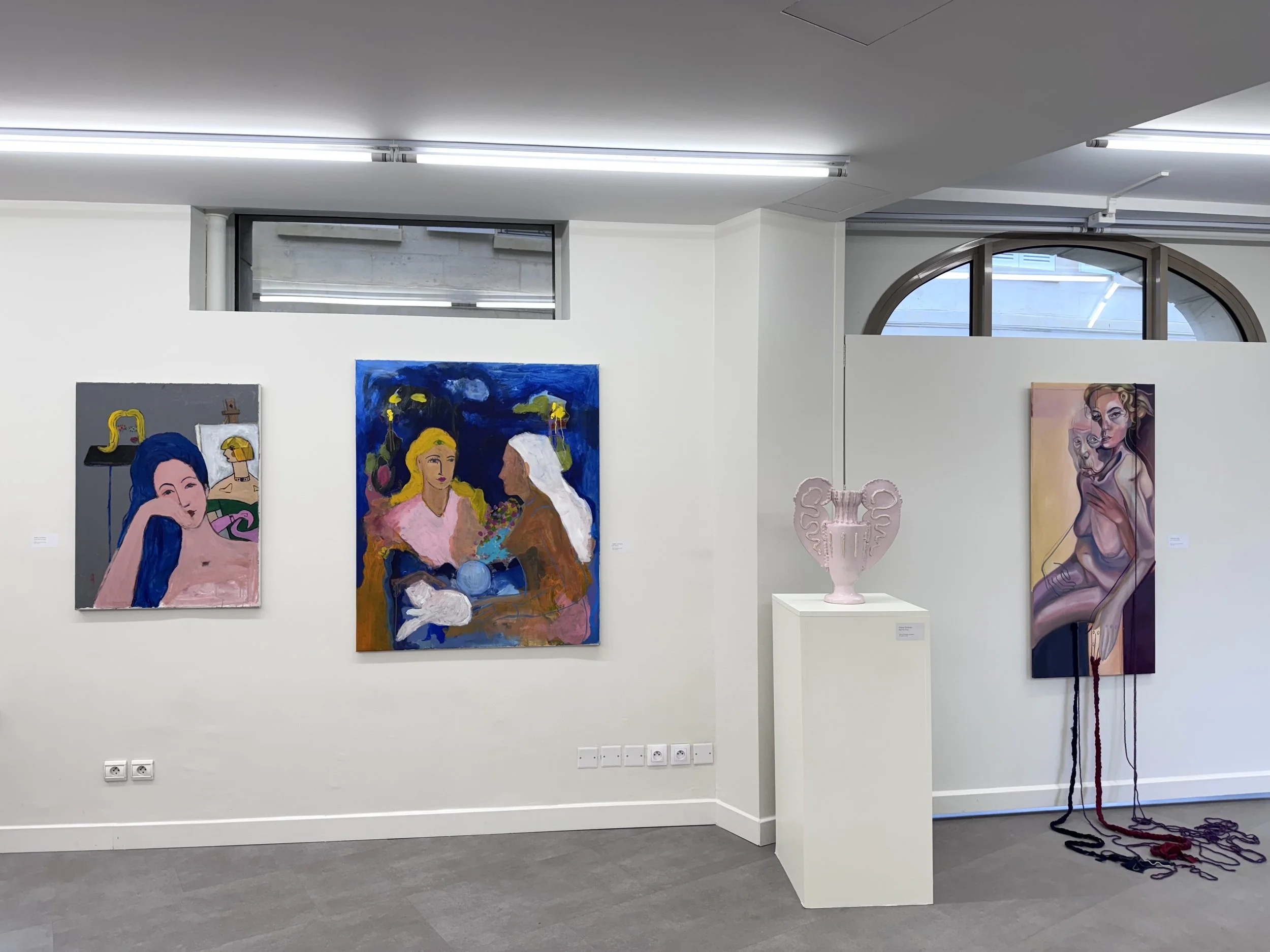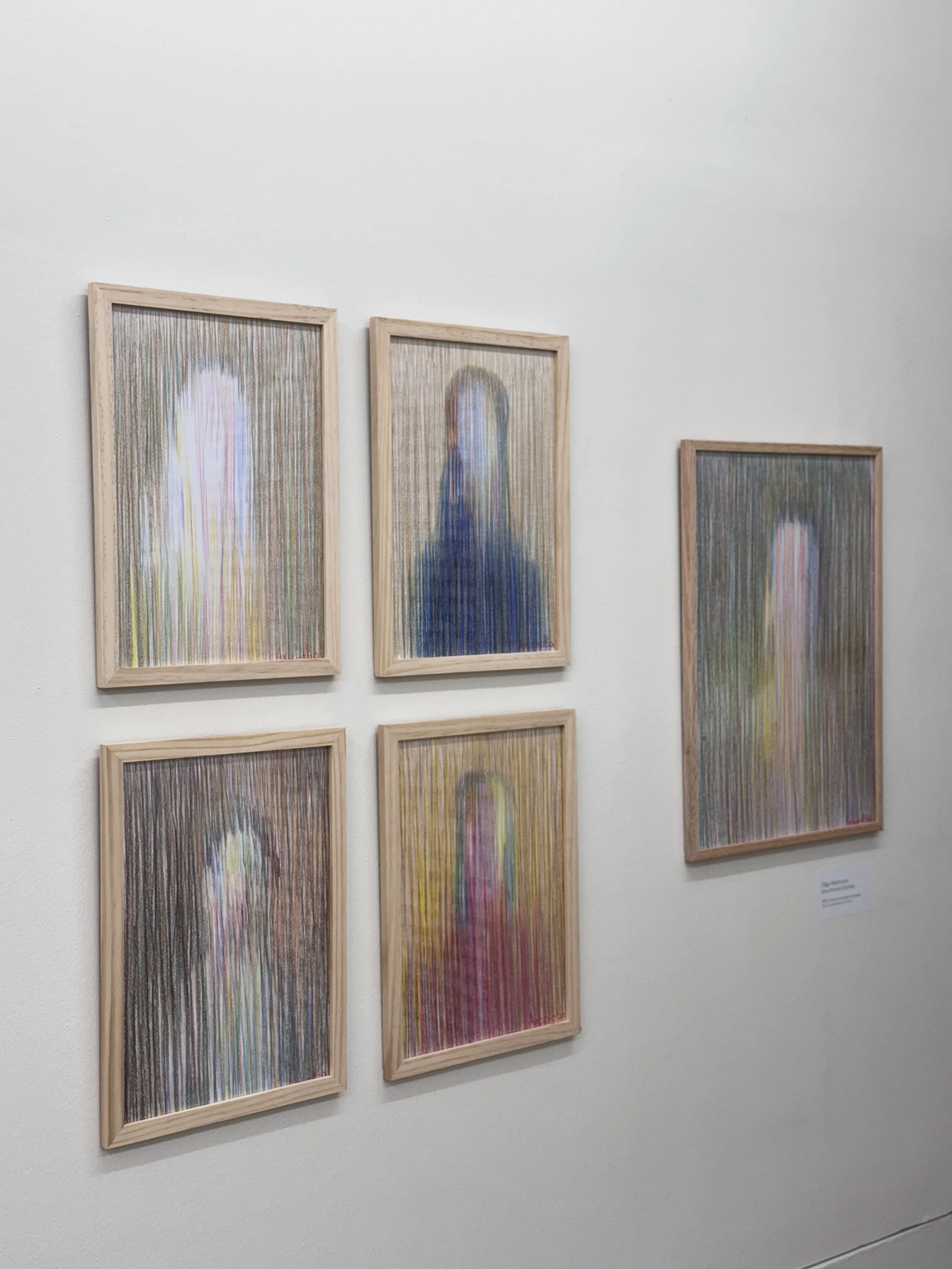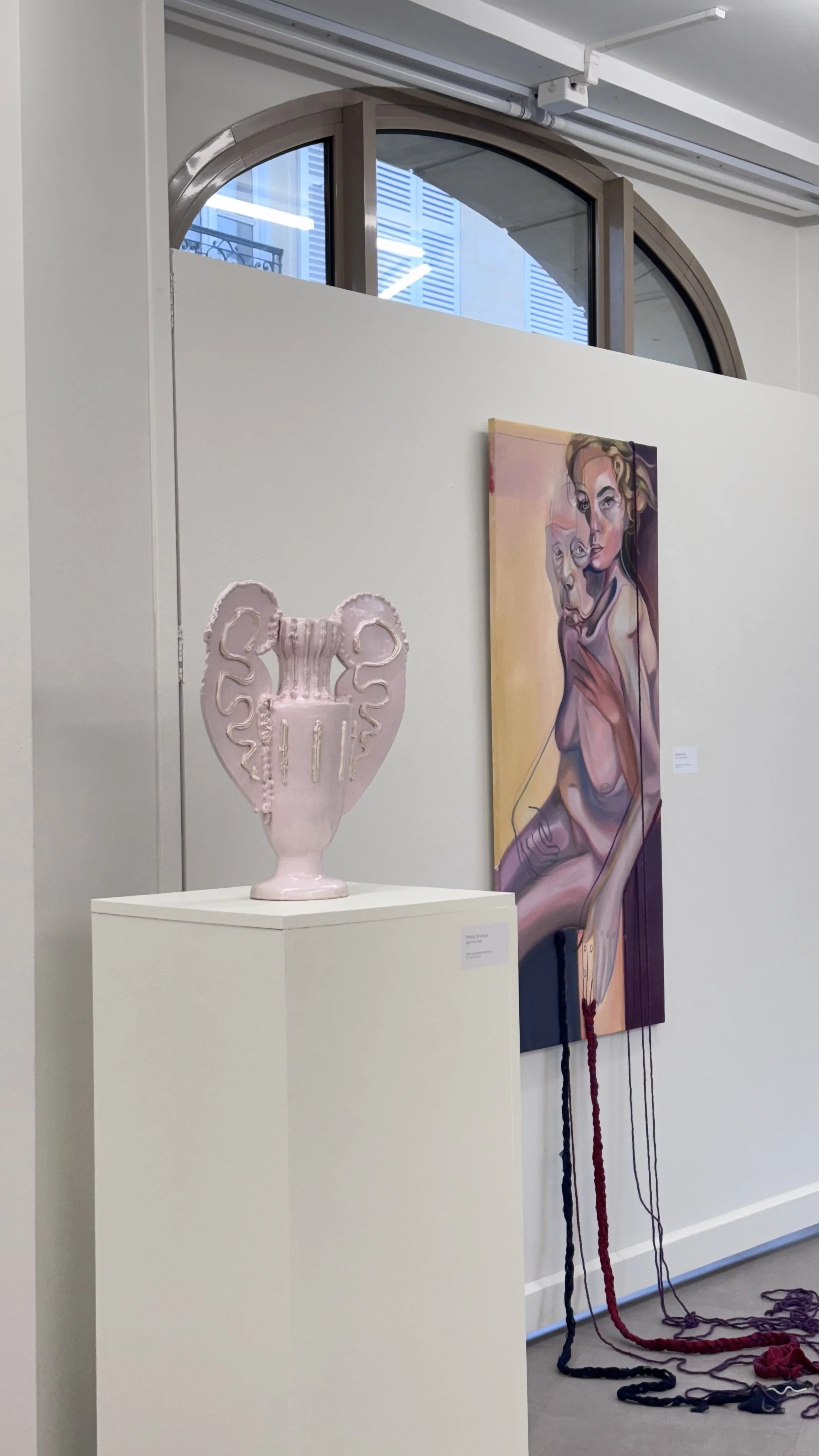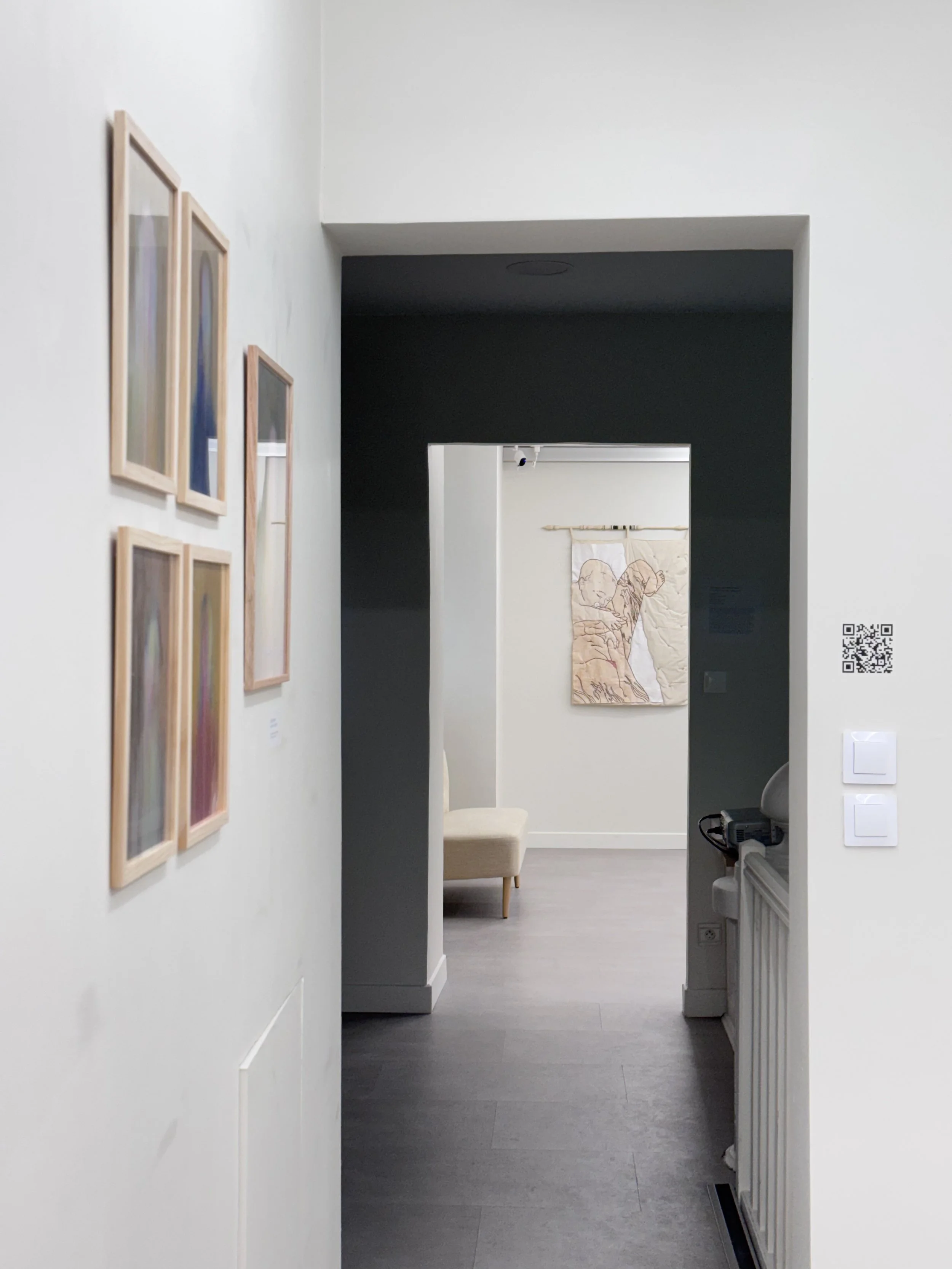In/Visible: The Changing Shape of Womanhood
Curator: Alisa Lisovskay
Location: Galleria d’East, Compiègne, France
Exhibition dares: 18.01.2025-15.02.2025
This exhibition delves into the intricate relationship between women, their bodies, and the socio-cultural depiction of the female image, offering a space where personal experiences meet broader cultural narratives. It encourages viewers to engage with themes of transformation, perception, and societal influence on the female body and the role of women in society and culture, offering both intimate reflections and critical analyses.
Exhibition’s goals are to:
- showcase the diversity and depth of women's perspectives on their bodies, encompassing personal journeys and societal commentary.
- promote dialogue around body practices and the socio-cultural perception of women’s roles as mother, lover, daughter, and nanny, encouraging viewers to consider their experiences with physicality, societal standards, and self-worth.
- support female artists by providing a platform for them to express their complex relationships with their bodies, thereby contributing to a more inclusive and nuanced narrative in art.
- challenge stereotypes and invite viewers to reflect on the cultural frameworks that shape their perceptions of bodies and beauty, thus fostering empathy and understanding.
Exhibition Sections:
1. The Body as Timekeeper: Age, Change, and Memory
This section explores how women experience and express the ageing process, focusing on how bodies evolve over time. It features works that visualise the body's physical changes, from youthful vitality to the nuanced beauty of maturity, and how these changes alter self-perception. Artworks might include depictions of skin textures, wrinkles, and the changes in shape and movement over the decades. The body movements, self-reflection in a mirror, the narrative about physical beauty and its norms, and their distortions - the central point for the conversation about the following artists’ works:
2. The self-perception and Vulnerability:
- In this section, the pieces may include depictions of pregnancy, experiences of
postpartum bodies, the impact of cosmetic surgeries, and representations of illnesses. It also tackles the distinction between "in control" bodies and those that deviate from idealised norms.
3. The Social Body: Cultural Influences and Norms
- Examining the external forces that shape body image, this section highlights how
fashion, media, and social expectations dictate ideals of beauty and femininity. Artworks in this area might reflect the pressures from social media, the rise of body positivity movements, and the historical shifts in beauty standards. It also explores the
role of the body within different cultural and religious contexts, showing how these traditions can both constrain and empower.
4. The Artistic Body: Self as Medium and Message
- Here, the body is seen as an instrument of expression and an object of study. This segment features artists using their perception of bodies as canvases or objects, highlighting the physical form as a means to convey stories, emotions, and critique. This includes the art mediums, where the body becomes a site of self-analysis, research, transformation and power.
The key question we are trying to answer is how body practices serve as a tool of artistic exploration, what can be learned by seeing the body as a medium for creative inquiry, and how female artists challenge traditional representations of the body through their work.
The exhibition design will guide viewers through an immersive journey using mediums such as photography, sculpture, tapestry and painting. Each section will create distinct atmospheres, from intimate and reflective spaces to more critical and thought- provoking installations.
